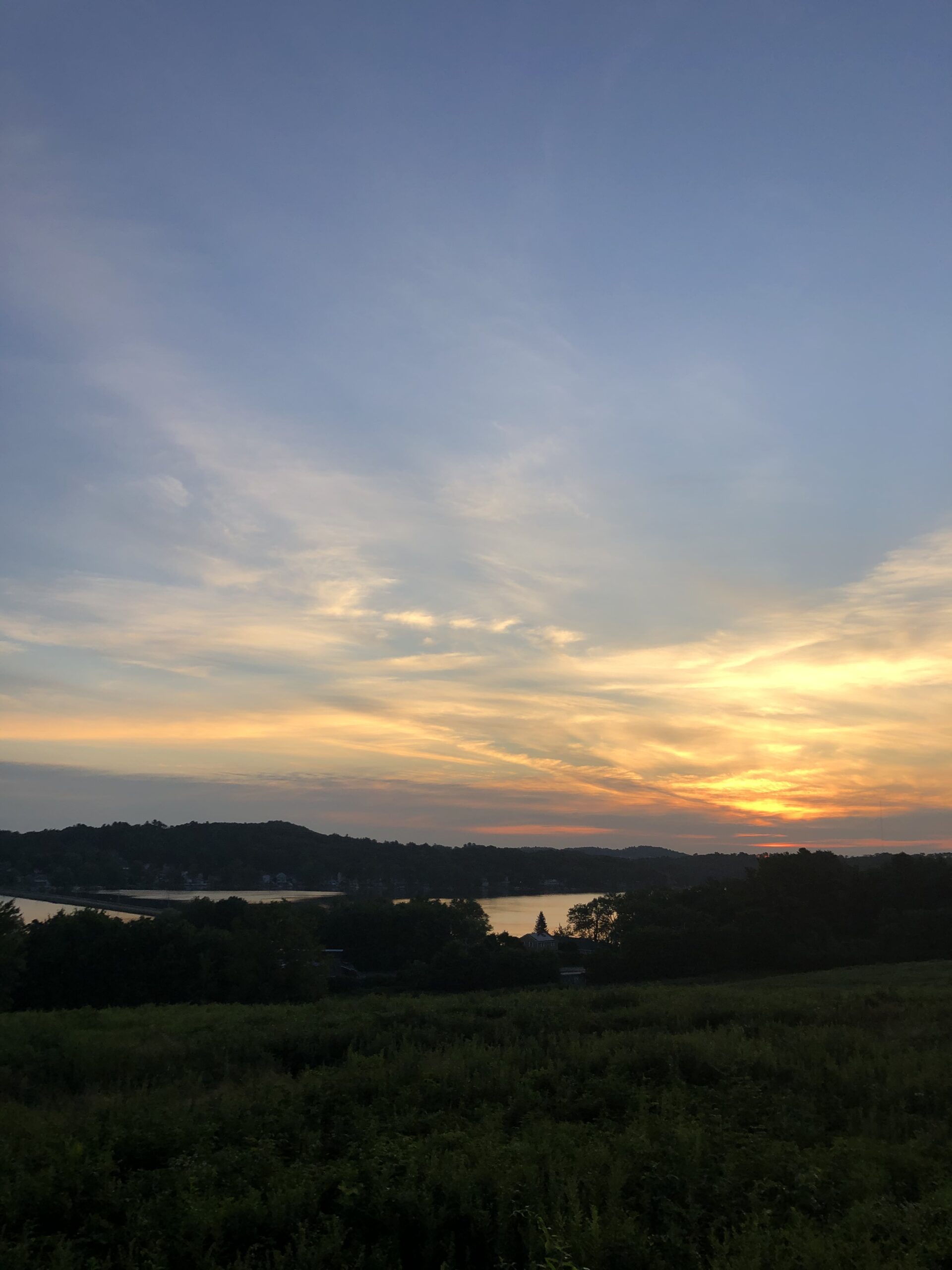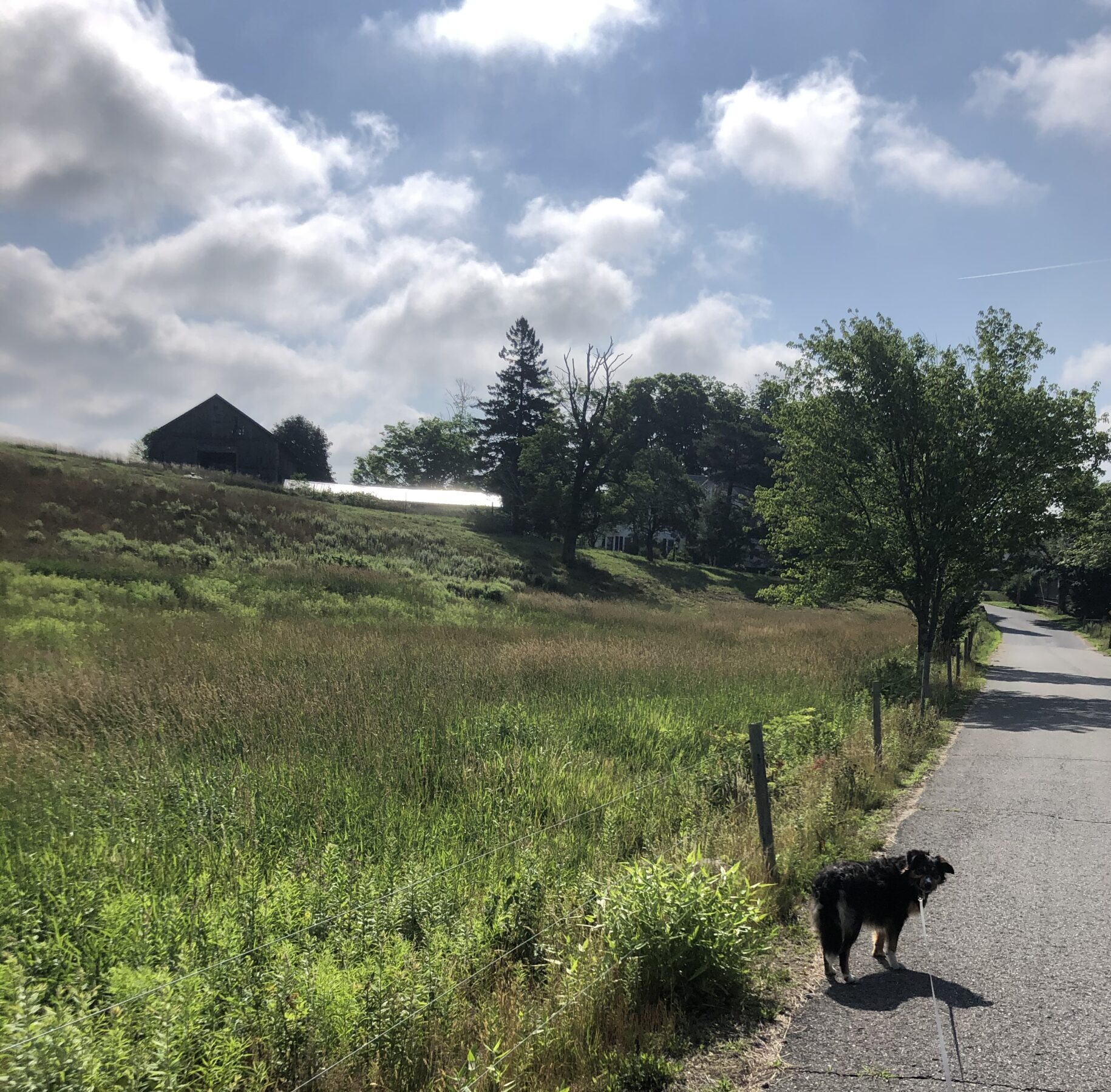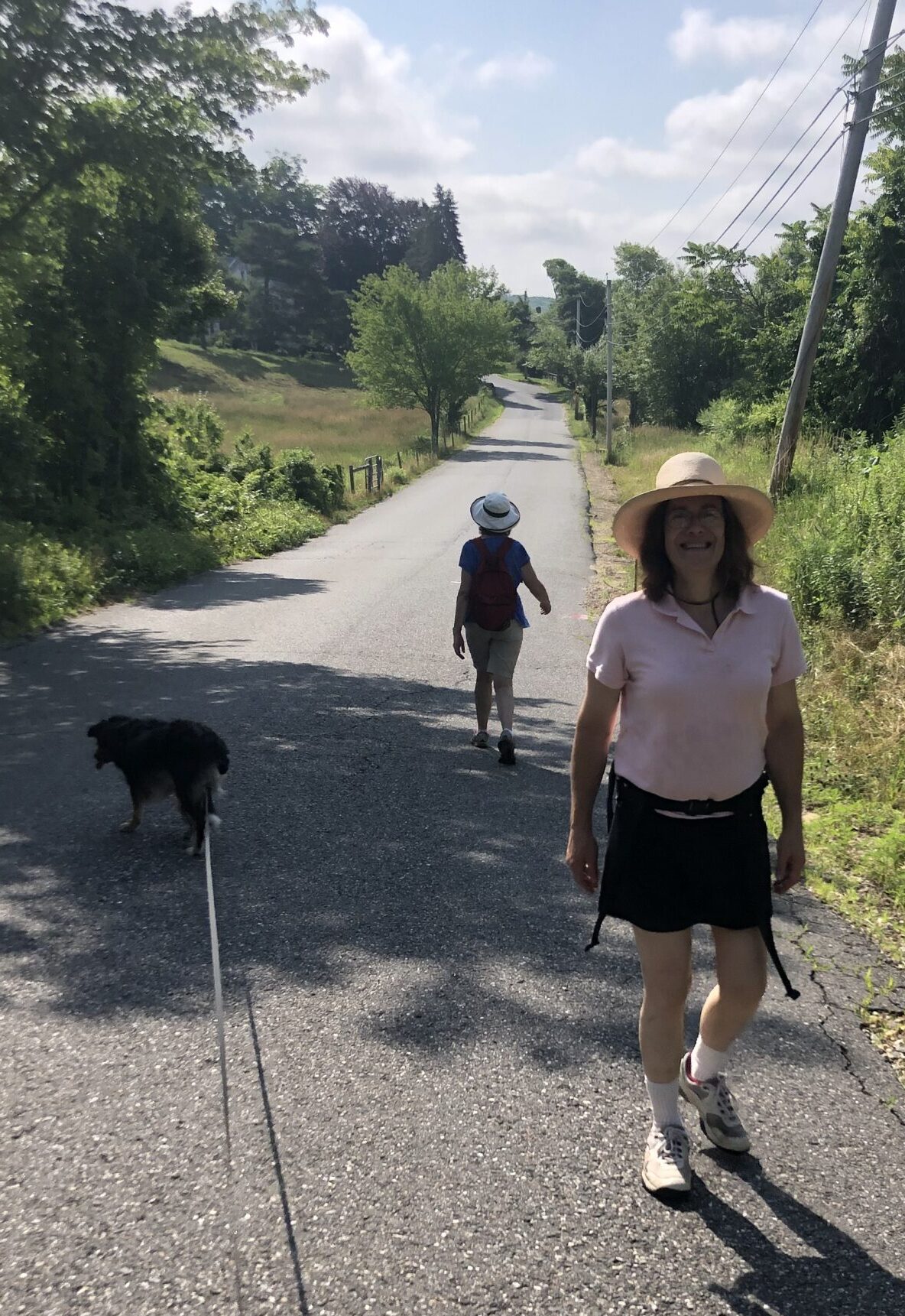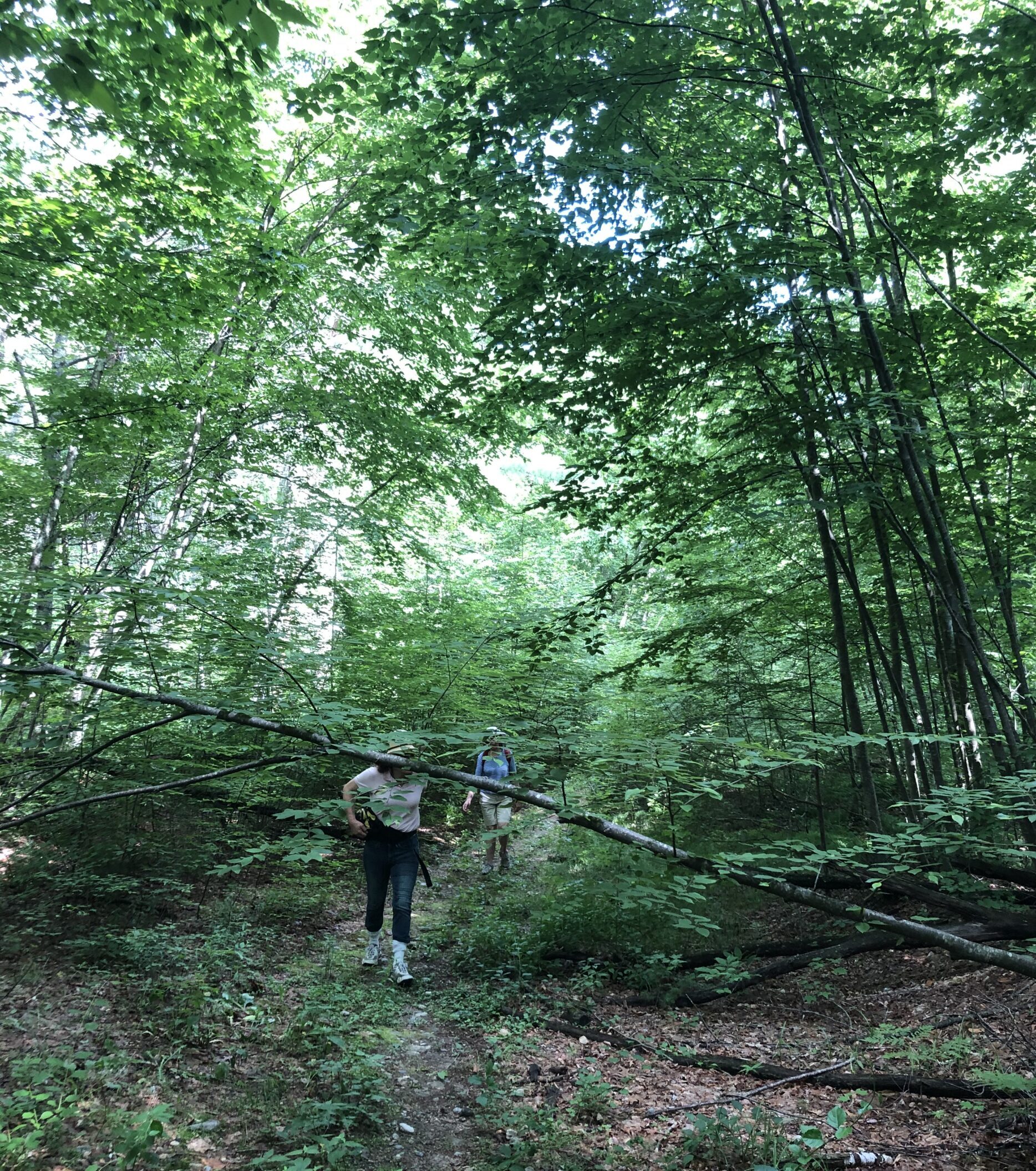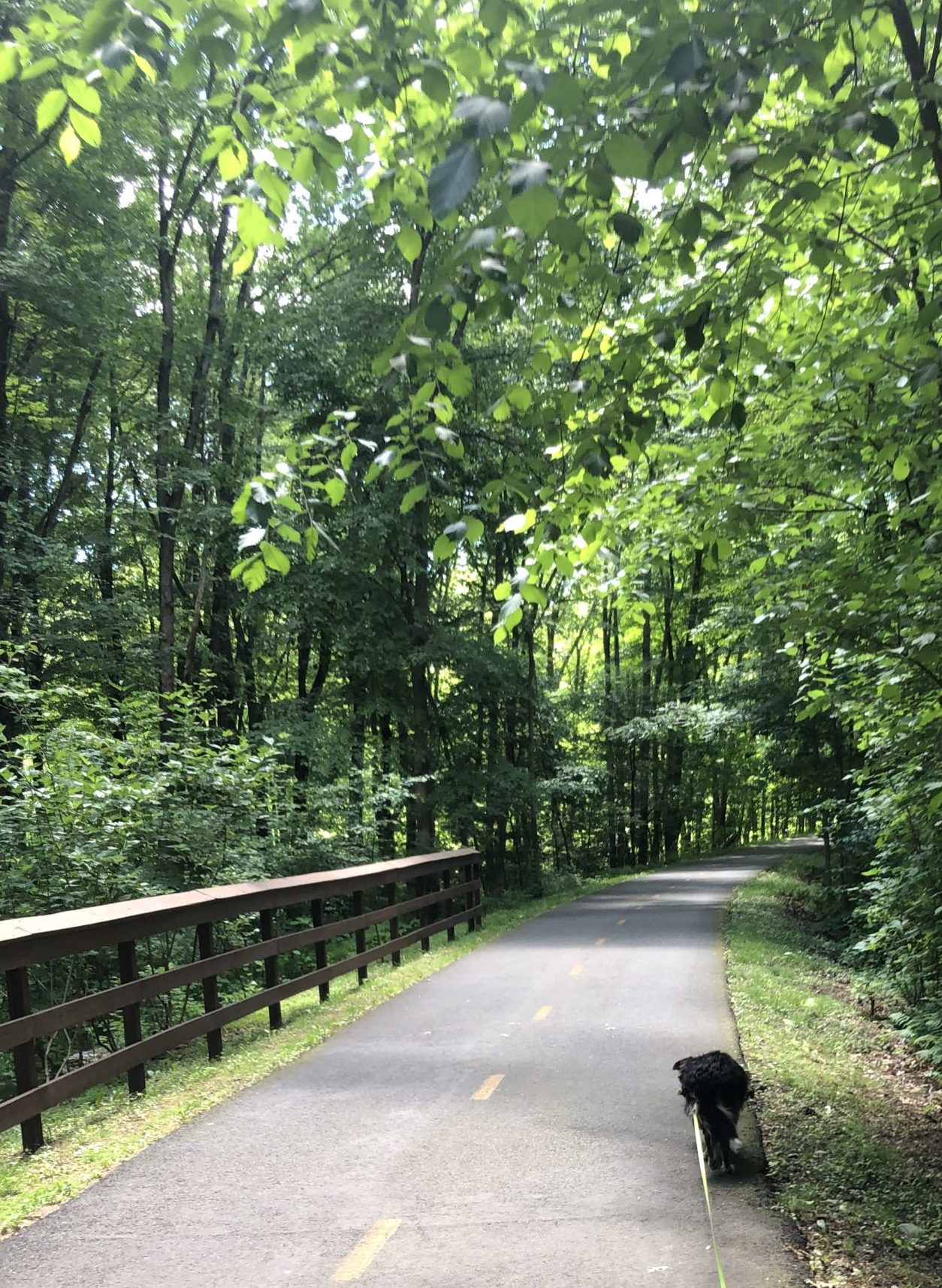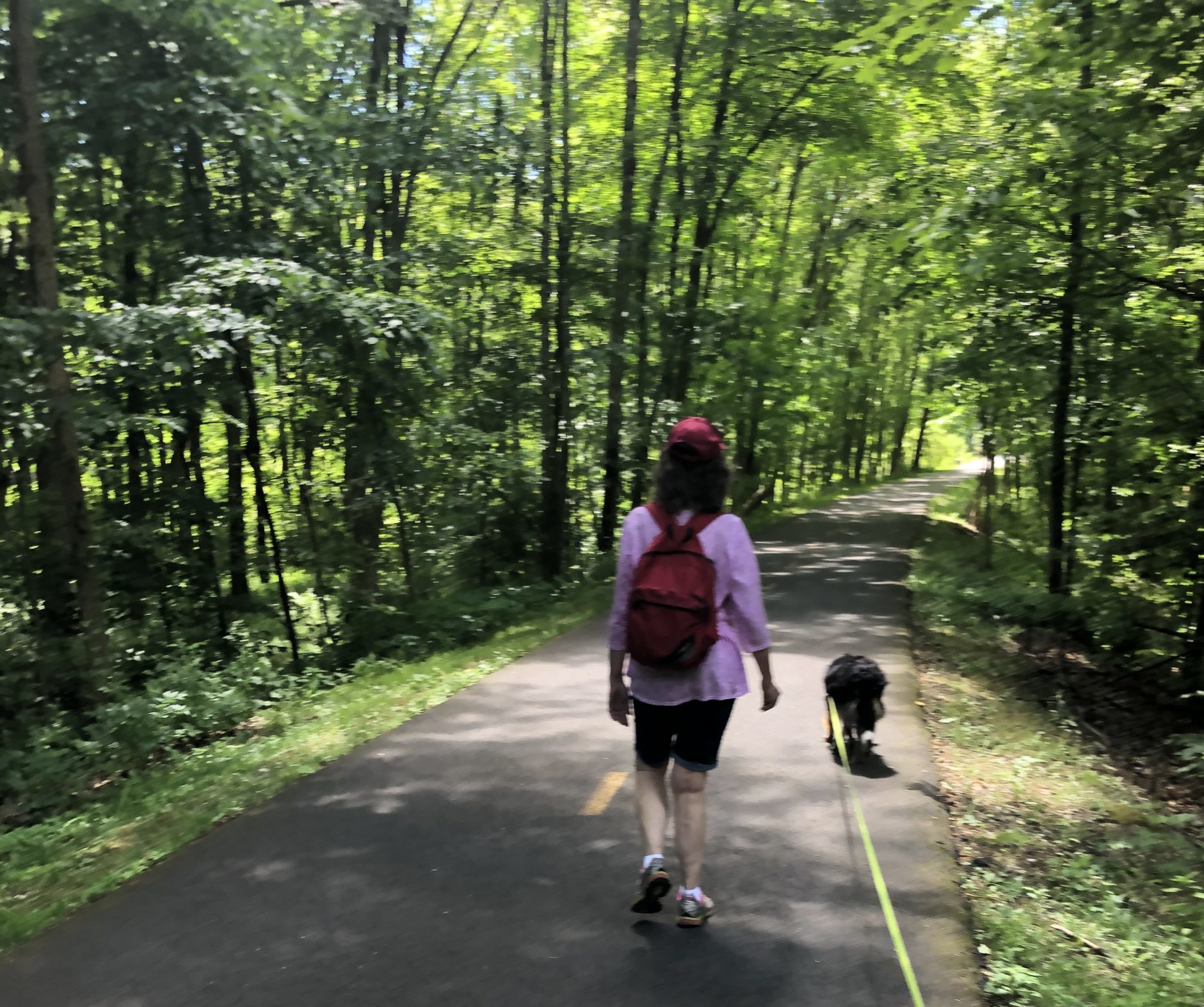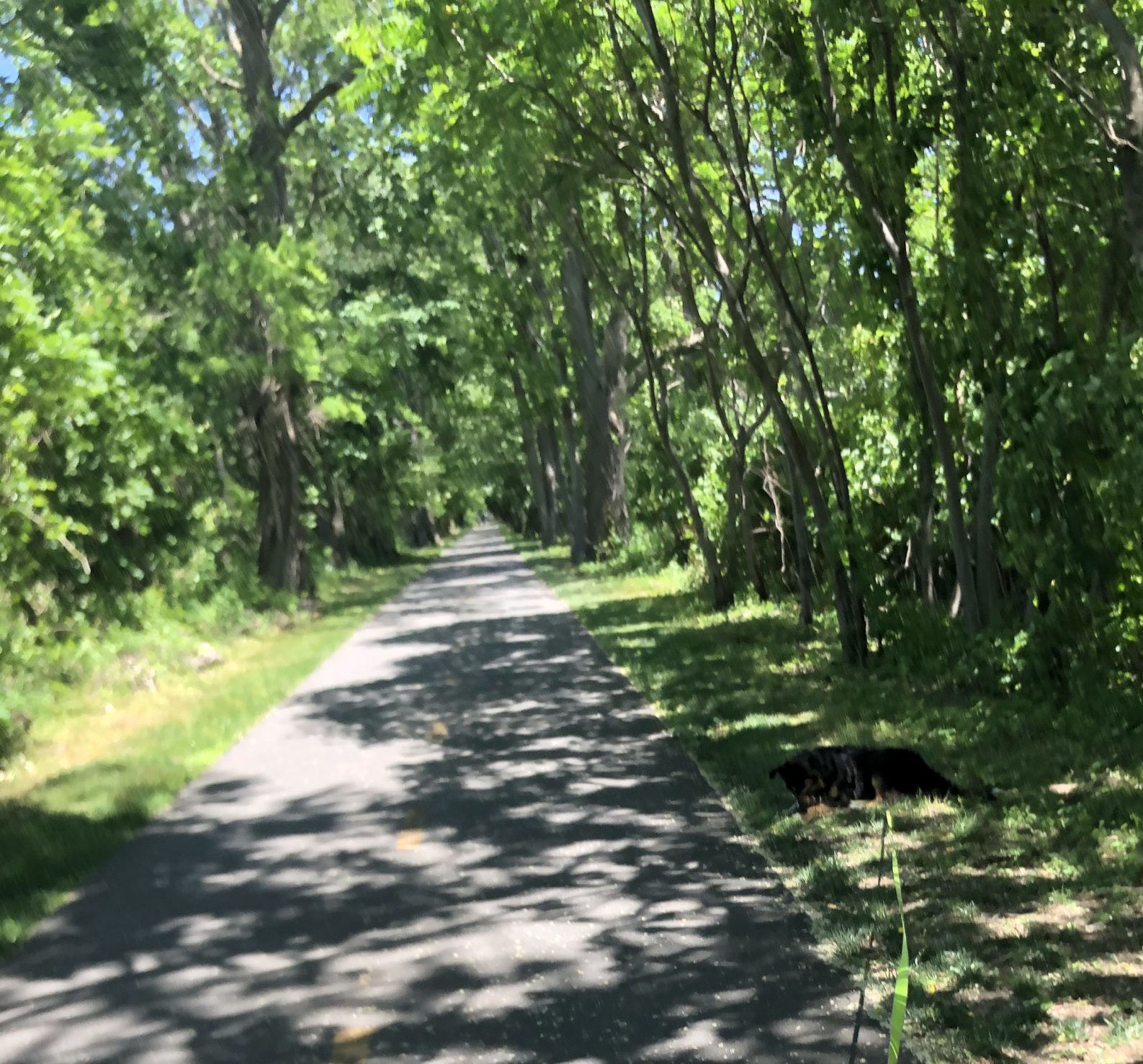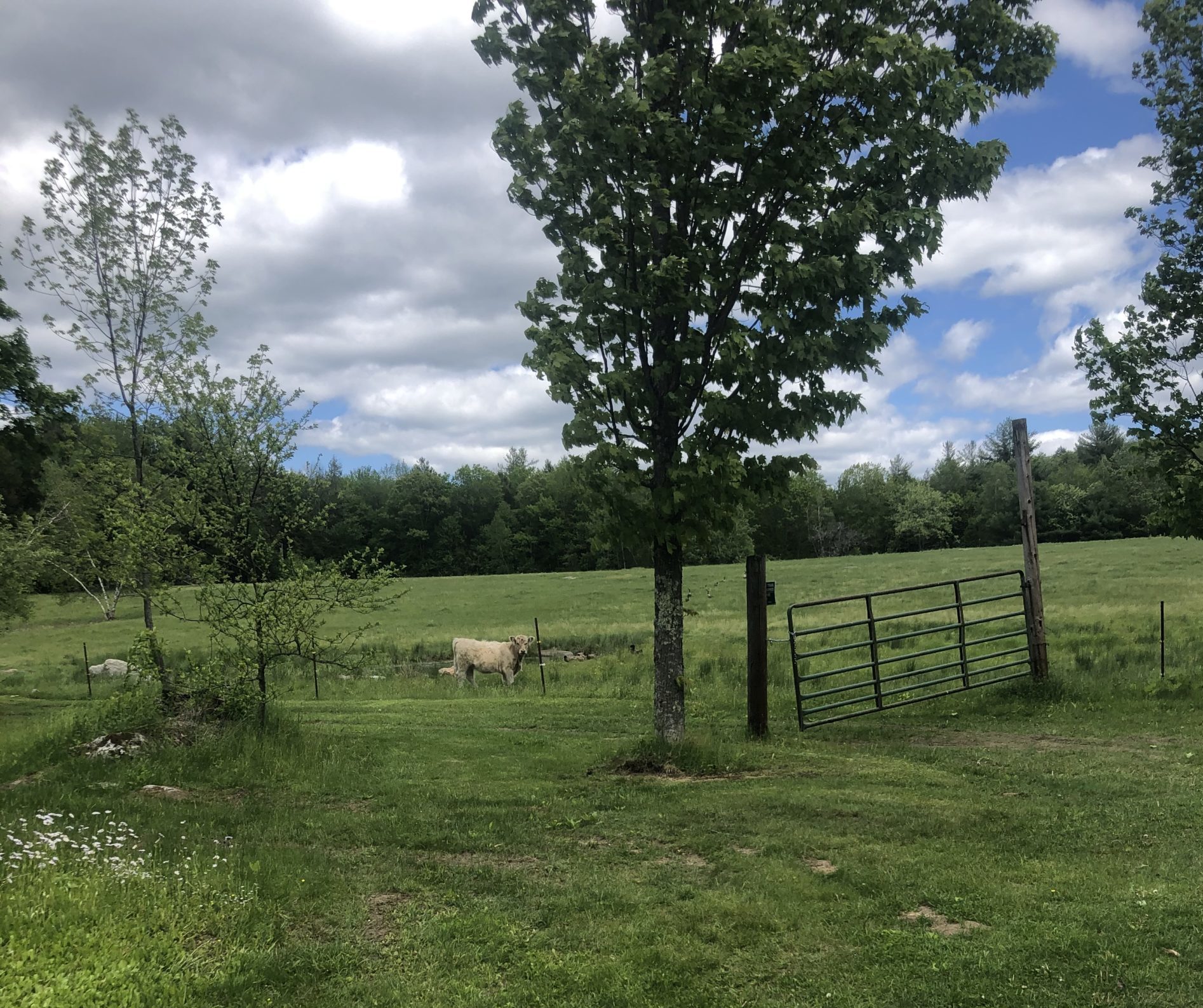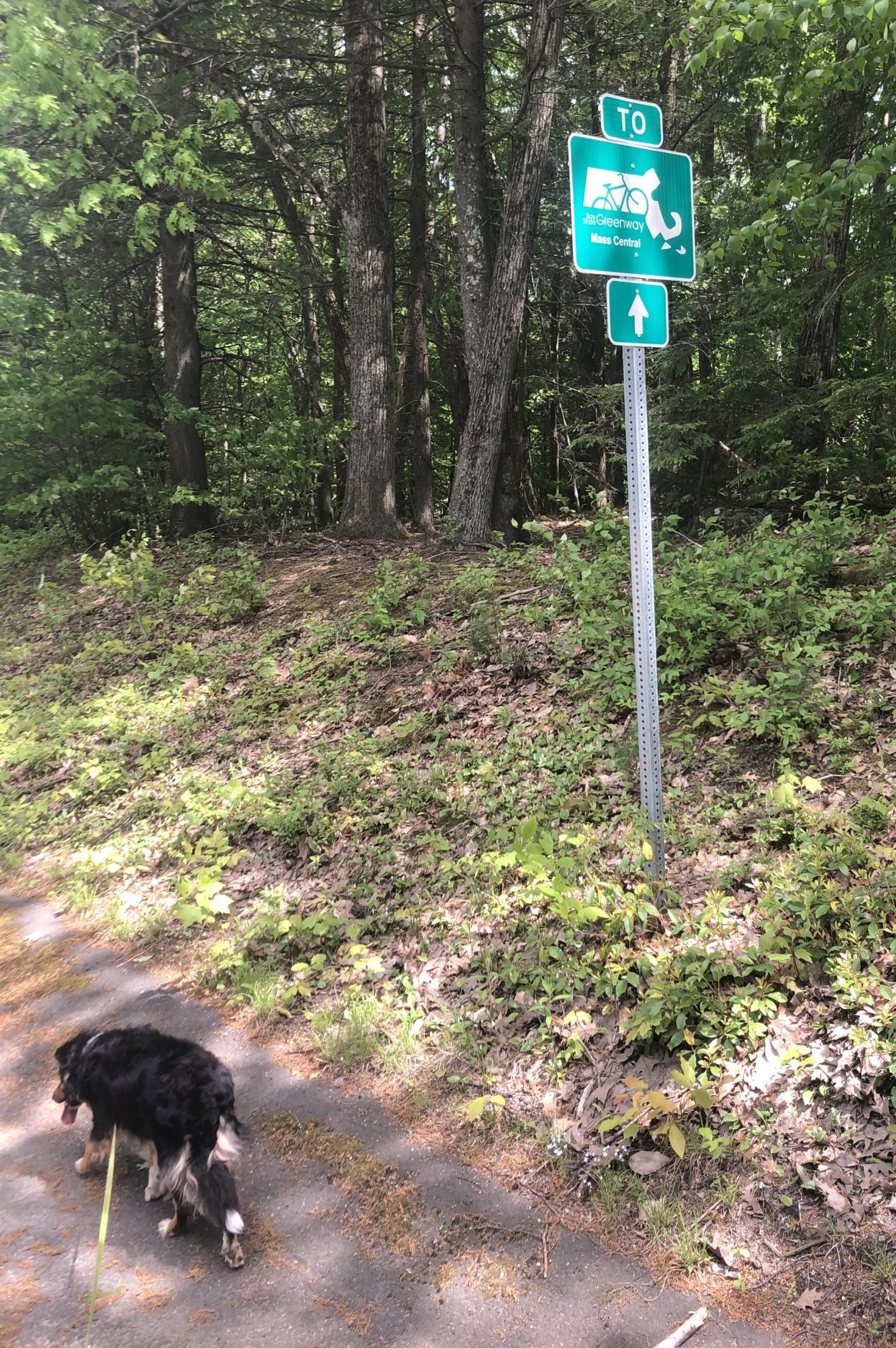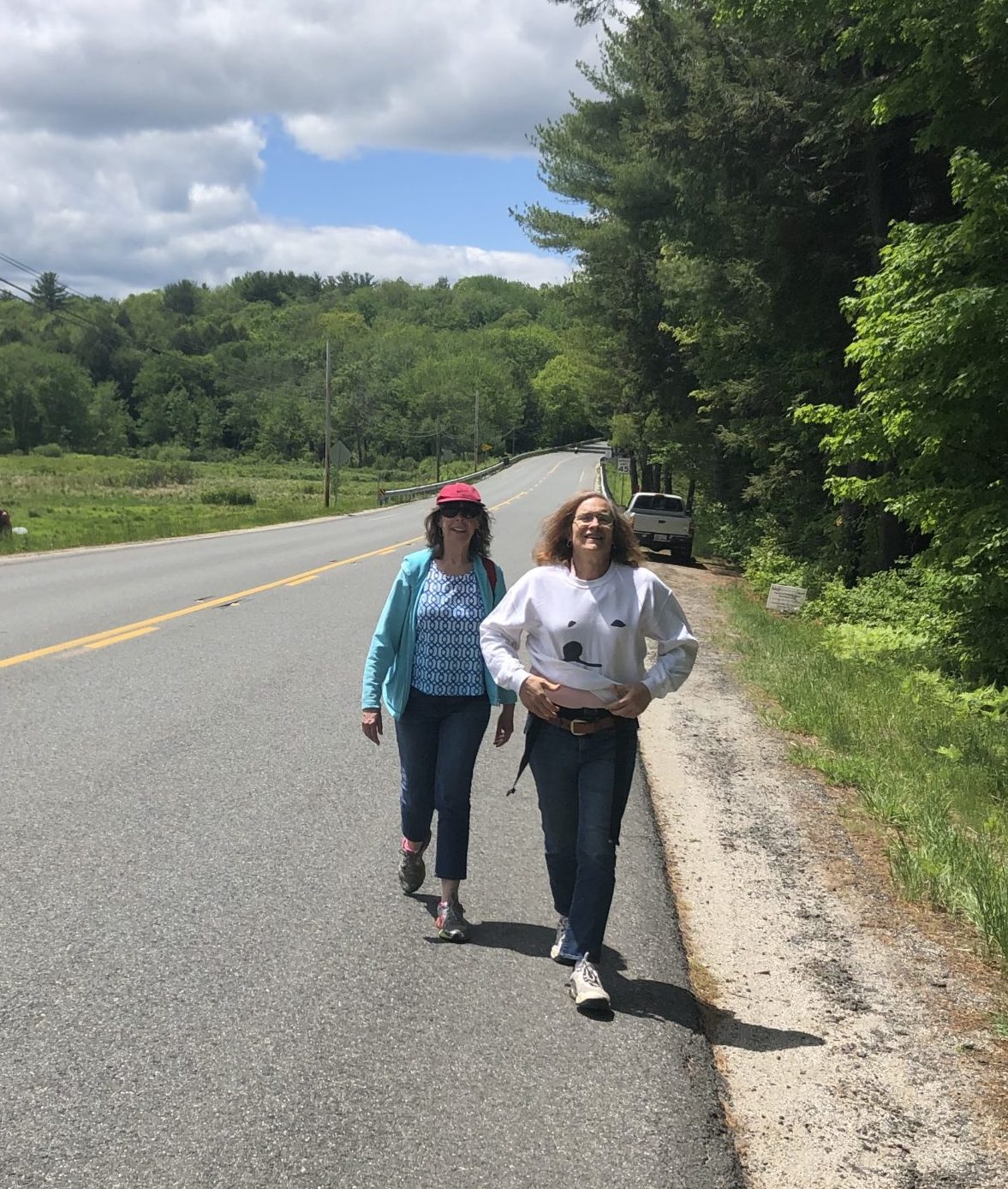You don’t always need a plan. Sometimes you just need to breathe, trust, let go and see what happens.
-Mandy Hale
It’s 4:45 AM and still dark. I have to use a flashlight to make sure I pick up all of what Waldo deposits. It’s overcast and sunrise isn’t due until about 5:30. Still, the city lights, although none shine directly onto the trail, provide enough ambient glow that I can easily make out the tarmac as it winds its way through the trees of Marlborough and Hudson. The temperature hoovers around 70, even at this early hour, and the forecast is for heat in the low nineties at around 4 PM. Yesterday it was 77 degrees at dawn! There’s also a 45% chance of rain from 6 to 8 AM.
I haven’t been awake for very long and my hazy mind slips its grip on the world twenty-first century man has created and wanders down the byways of the here and now, surrounded by fecund Mother Nature. Like Waldo, as he sniffs his way along the trail, my attention goes with the flow as we walk along. There’s a slight breeze as twilight slowly brightens the leaden sky. It wanders its way through the trees, enticing the leaves to sing in sibilant whispering song. Birds rise early and, progressively, more and more of them sing out their own morning greetings as we start out on the rail-trail. I’ve given it some thought and I think a good guess as to why people feel that bird song is cheerful is due to genetic memory. When the birds sang, it was, to our ancestors, like a town crier calling out, “All’s well!” When the birds became silent, that was a time to start looking around for some danger that our avian neighbors perceived, like an approaching predator. The birds, today, seem to be raising a rally cry for a good day.
I notice Waldo saunters along, investigating things beyond my perception and I leave him to pursue his curiosity as I pursue mine. I smell leftover skunk scent and I make sure Waldo stays on the trail and away from any bushes or holes where Pepe Le Pew might be hiding. I also try to keep him away from the mud puddles left over from the last rainstorm. He still has plenty of interesting places to explore and he wanders jauntily down the path with tail wagging.
After about a mile and a half of my loosely watching the greenery as we trod by, it starts to sprinkle. This is a little earlier than forecast, but this is New England and anything can happen at any time. A 45% chance of rain means a 45% percent chance of getting 100% wet, so I did bring a rain jacket and pants, if needed. The sprinkle slowly becomes a solid drizzle and I put on the jacket. It increases and I put on the pants, which is a pain in the butt because I have to drag the legs over my hiking shoes. I do this standing up as there is no good place to sit where we are. After hopping along on one foot and then the other, I finally get them on and we continue on our way. Waldo has been patiently waiting for me while I was putting on the pants and I wonder what he’s thinking. Sure, Waldo, you can laugh, you who always wear your all-weather birthday suit.
We don’t go very far and the rain lessens and then stops. In 70-degree humid weather, the rain suit can be uncomfortable because it doesn’t breathe. Exercise creates body heat that accumulates under the impermeable plastic that doesn’t allow my proliferating sweat to evaporate. So, I take it off, roll it up and stow it away under a belt. The pants, they stay on. I don’t like it when Waldo laughs at me. Of course, it’s not long after I take the jacket off and it starts raining again. And so it goes. For six miles. For a little over two hours. The whole time I’m swimming in the environmental ambience.
The sun is fully up before too much time passes, although you wouldn’t know it because it’s overcast. There are no shadows, just an ever-brightening greyness, sometimes wet, sometimes not. On a clear day, you can measure how long the sun is up or how long until it sets with your hands. One of your fingers, held at arms-length, covers about 5 degrees of heaven. The sun and moon also take up about 5 degrees of space. If the distance from the rim of the sun to the horizon is four fingers, it’s about one hour above the horizon. But on a grey day like today, it’s like navigating in a fog on the high seas. You’re better off looking at your watch.
After a little more than two hours, we get back to the car. I put Waldo in the passenger seat and start the car. Like a rubber band being stretched out from its natural relaxed condition, my mind is pulled back and shackled to the twenty-first century with thoughts of traffic, to-do lists, and other mundane matters. But the rail-trail is still there, waiting for us to return tomorrow.
And once again leave the human-created world behind to drift down Mother Nature’s meandering existential rivulets.



